Brazil, Part 3: The end of the TransAmazonica
— Amazon, Brazil, South America — 7 min read
August 20 - 25, 2010
From Itaituba, the TransAmazonica is more busy and was not as enjoyable as the section west of there. It was another 1,000 kms (620 mi) to Maraba, where the dirt road ends and then I turned north for Sao Luis.
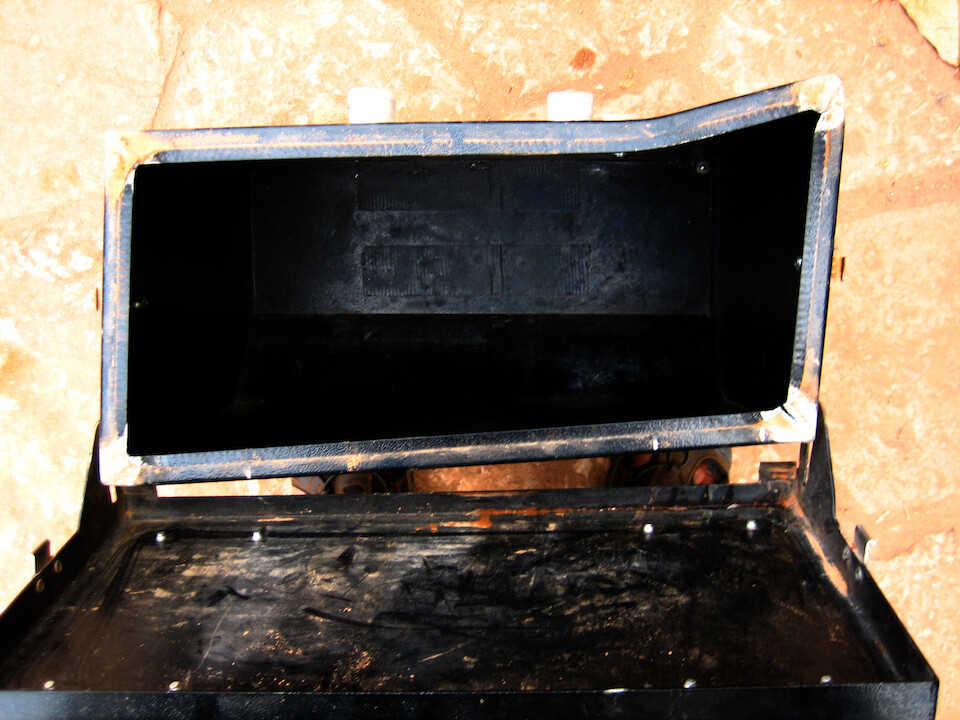
Oops, I made a boo-boo. I pulled into Itaituba and went about setting up camp at the side of a petrol station. The station manager insisted that I move in front of the office so that he could keep a proper eye on me for my safety since it was too unsafe in the shadows. But, as I parked the bike up front, I didn't pay attention to the slope and sanDRina went crashing down on her right side. These poor Happy Trail panniers are sure taking a beating, but I'm quite impressed with their strength. I used a hydraulic jack from a nearby tire shop to straighten out the box so that it would close again.
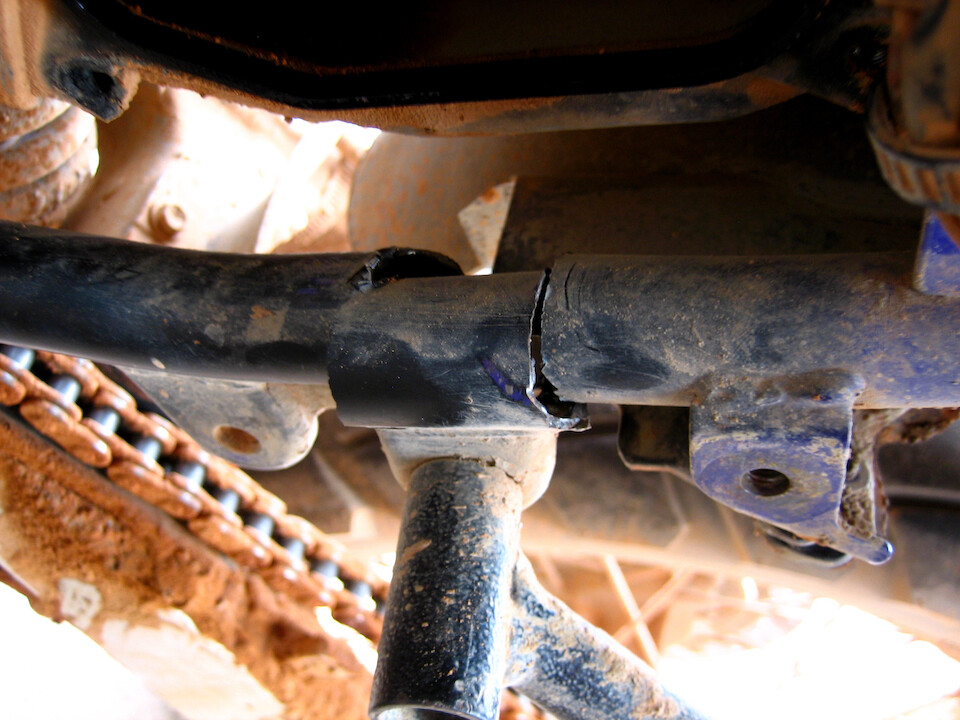
The box was the lesser worry because I found my subframe had cracked on the opposite side. As the bike fell on its right side, the weight of the left pannier impacting the subframe through the pannier rack was too much for it and it sheared around the joint. Note: this is not the actual frame of the bike, but the part called the subframe, which supports the rider and the luggage.
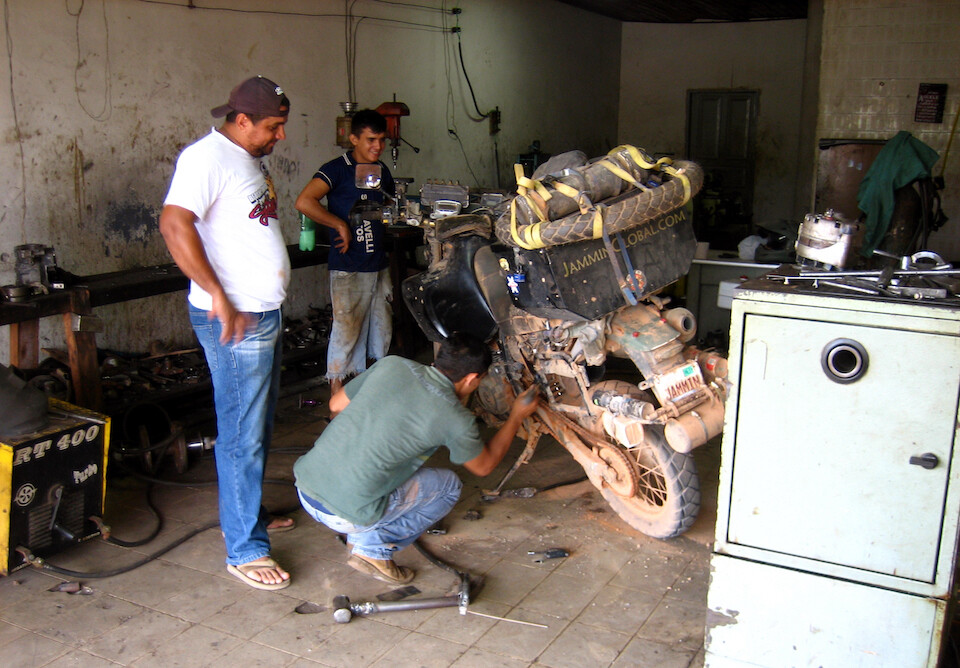
A welding shop was nearby and the guys got right to work. They were quite young, but looked experienced in the jobs they were doing. Lots of cracked crankshafts, wheel rims and other heavy duty vehicle parts were being welding up by these guys.
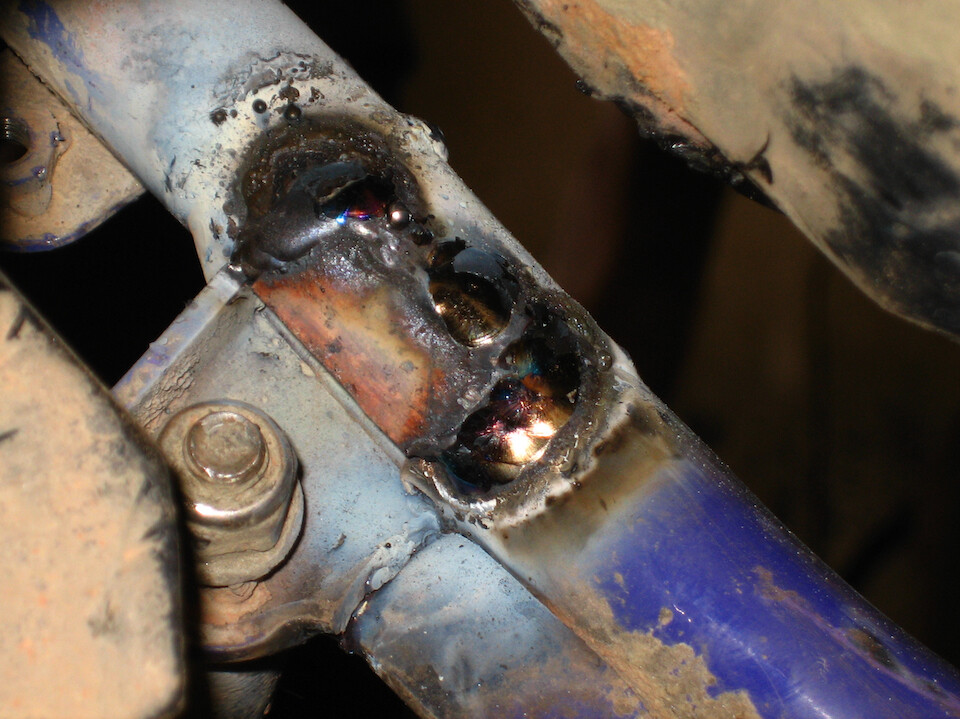
In the process of filling in the hole. They did a good job for R 20 and it hasn't shown any signs of weakness, yet.
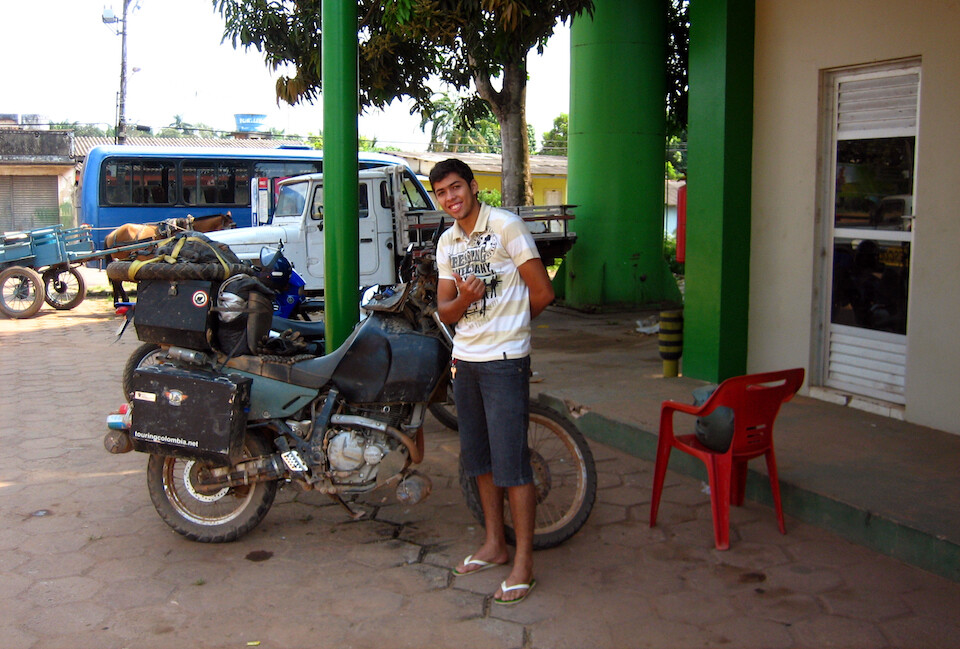
Ready to hit the road with the bike all put back together. That's Edson, the son of the petrol station owner who let me use some free internet and wanted to practice English with me. I slept on the sidewalk there with my tent, but it was too hot at night and I was sweating buckets. I was ready to throw in the towel, but I didn't want to move sanDRina with all the luggage until I could fix the subframe.
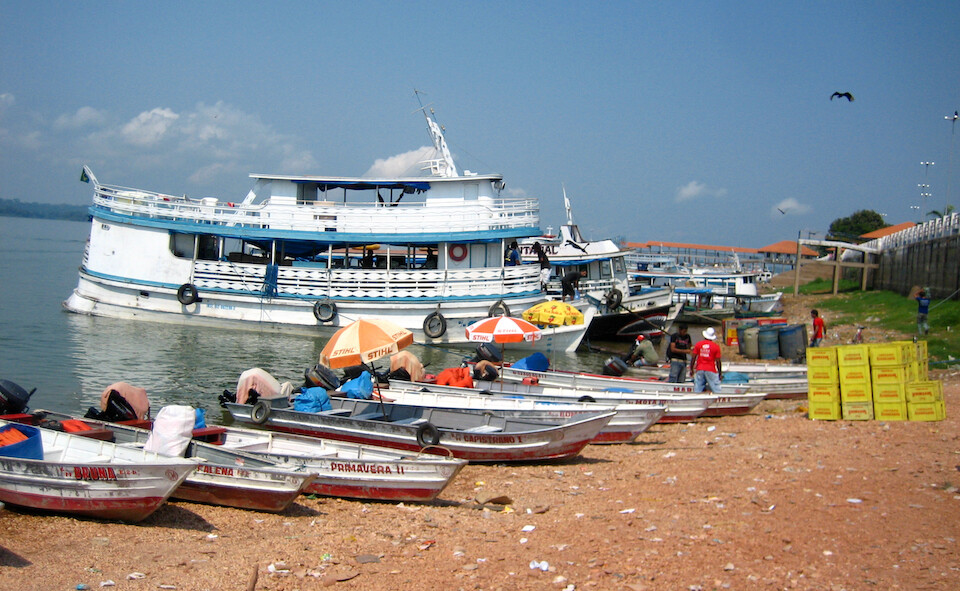
On the shore of Rio Tapajos in Itaituba.
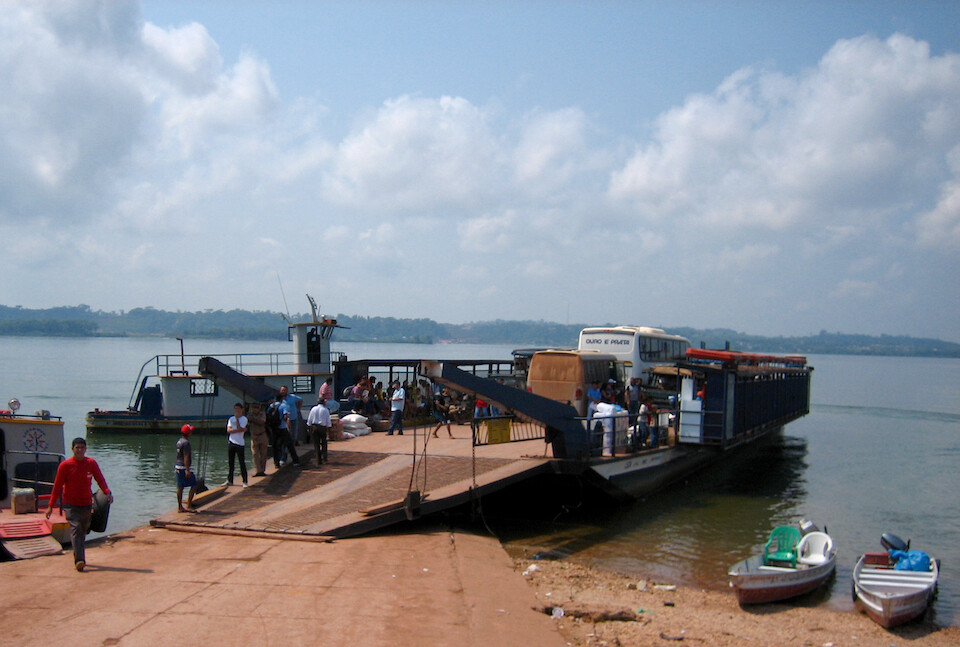
Boarding the ferry across the wide Rio Tapajos, which left once every hour for a 20 minute ride to the other side.
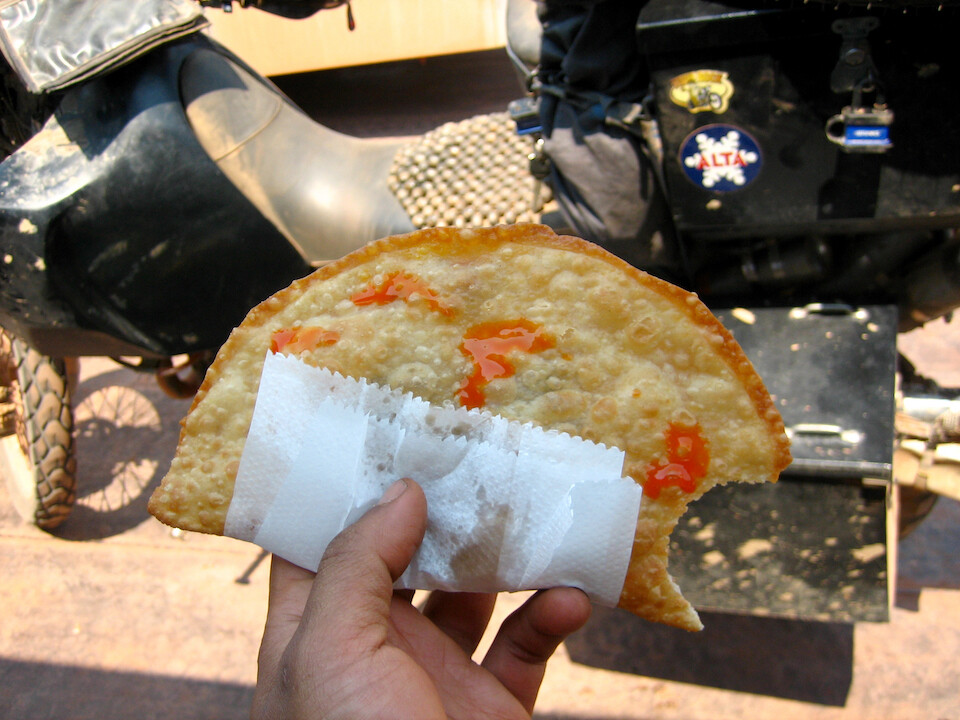
Having a quick snack of a pastel (pas-teu), a typical fried snack found all over Brazil. It's a puffy pastry shell with meat or cheese inside. Goes well with hot sauce.

Looking back at the shores of Itaituba from the ferry. I didn't get to see the Amazon River, but I can imagine how grand it must be, compared to these gargantuan tributaries.
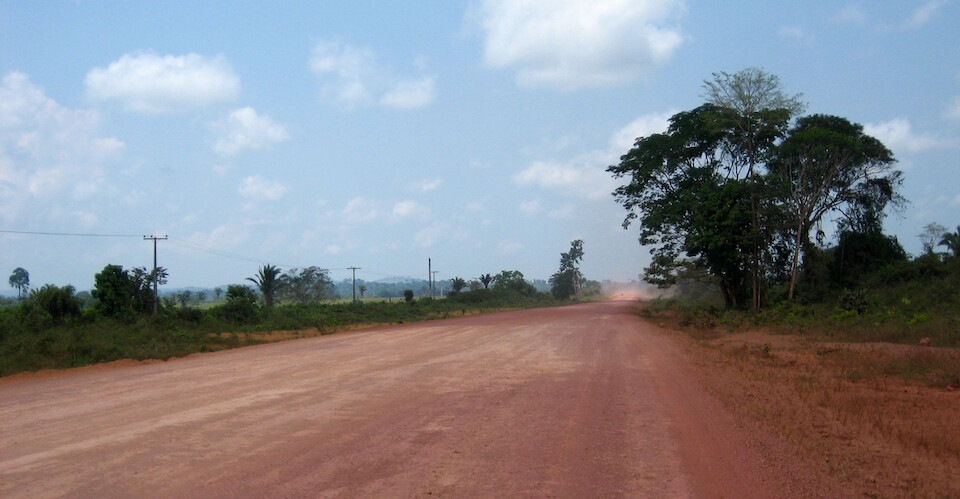
On the final stretch of the TransAmazonica Highway. It immediately felt less interesting of a ride with trucks and buses rushing by with hordes of small motos swarming like mosquitoes.
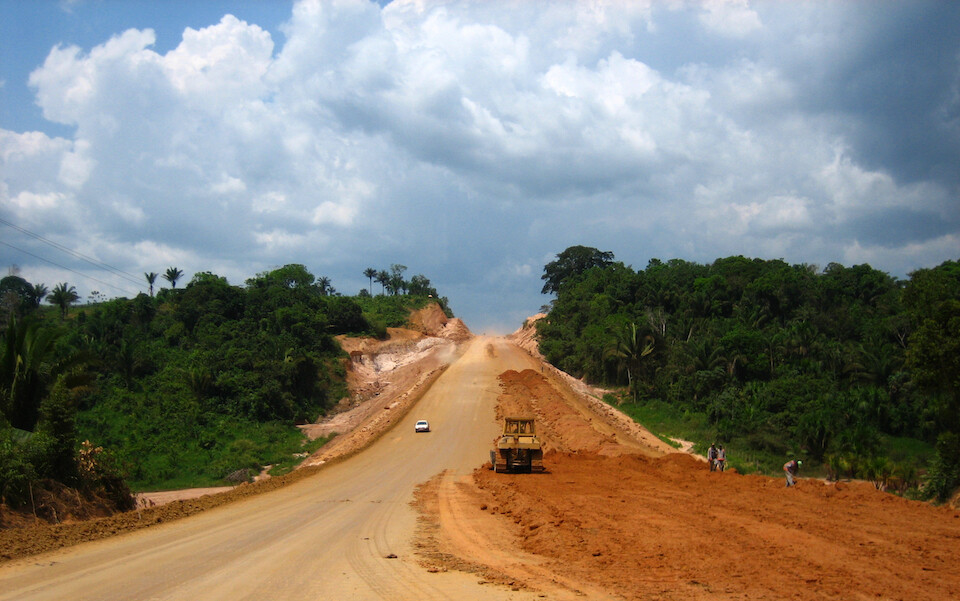
There was lots of construction and looked like they were getting ready to make it a 6-lane highway, uggh.
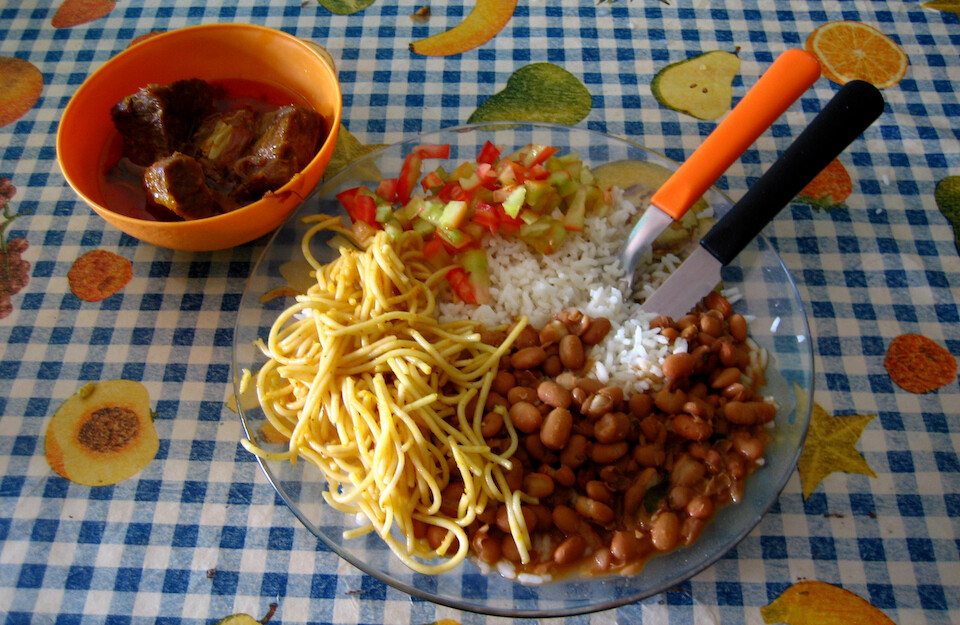
My first lunch since the churrasco. A typical Brazilian meal of rice, noodles, beans, meat and some salad for R 5. I was happy not to get the post-meal-sleepies after such a heavy lunch, which is the biggest meal for most Brazilians.
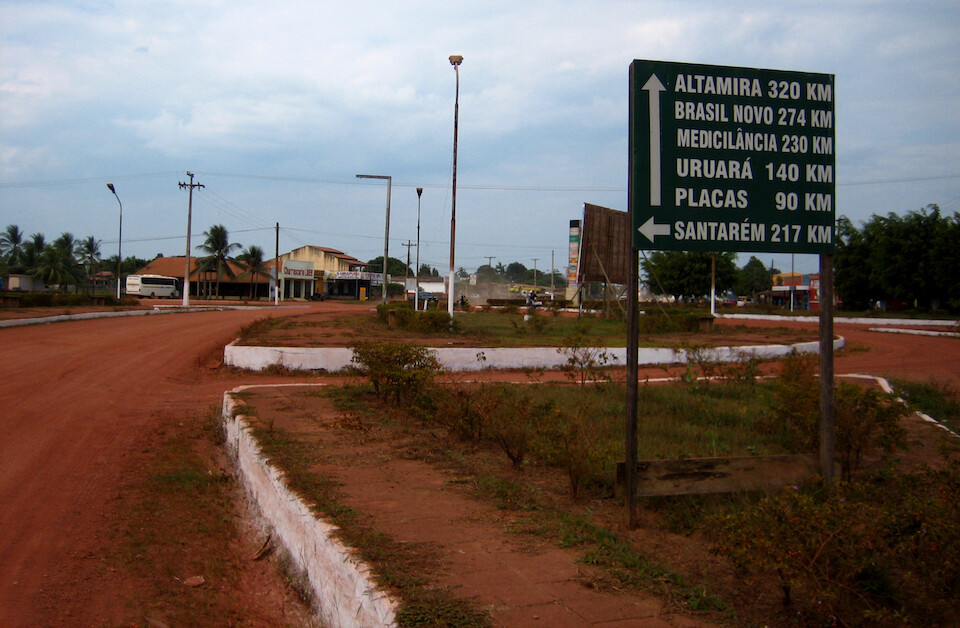
A distance board at the intersection to the road heading north to Santarem on the Amazon River, where you can take a boat up to Manaus. I was heading to Altamira in two days.
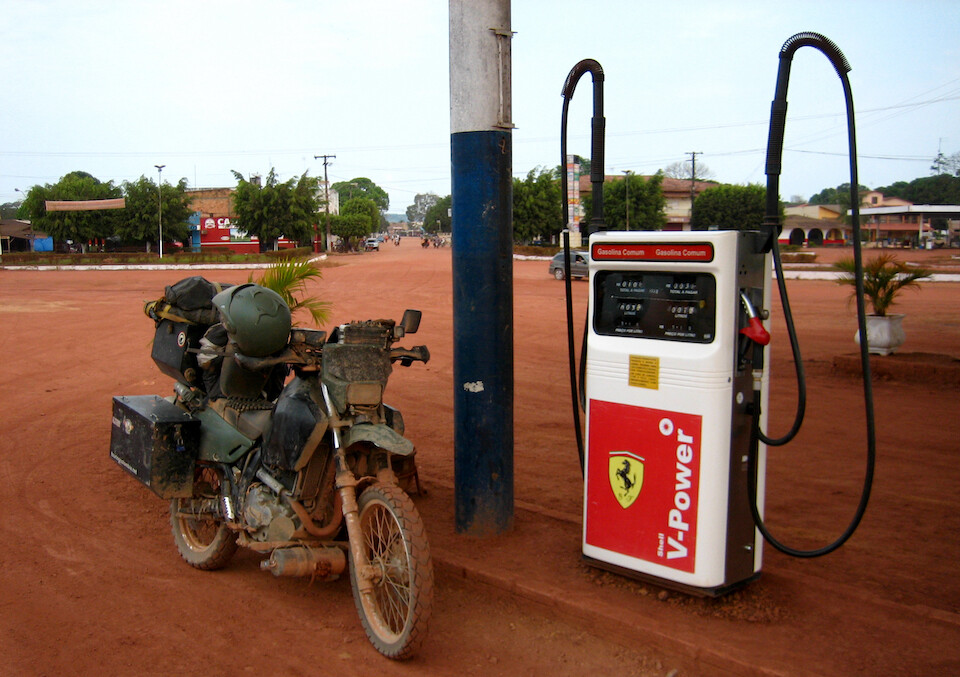
Filling up at a Shell station, but since the roads were all dirt, so was the station grounds.
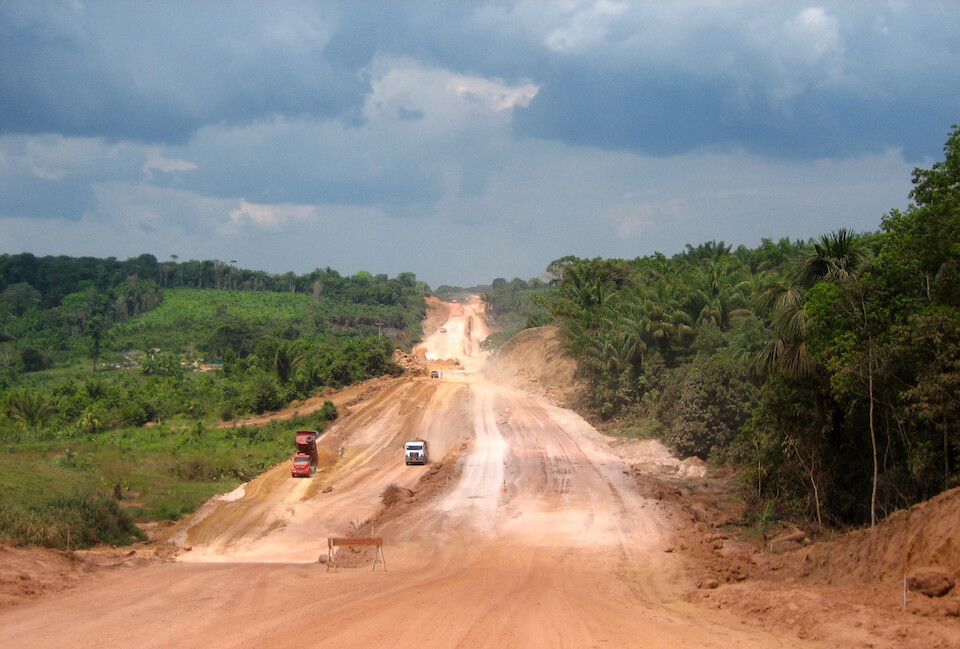
The construction sections were sandy and I just couldn't get over how wide the road was in places.
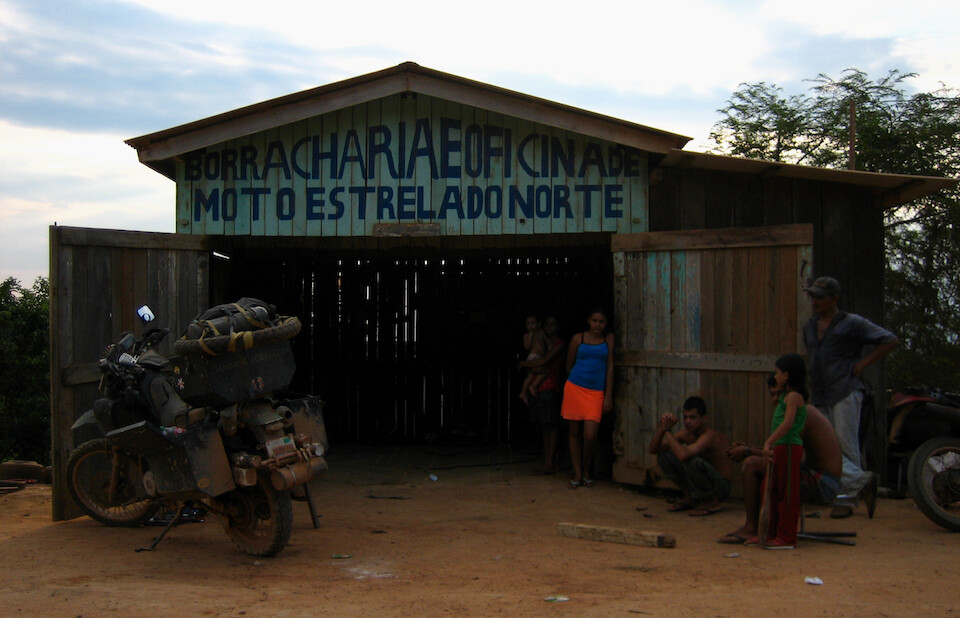
Towards the end of the day, I felt my clutch finally losing grip on the steep hills and knew it was time to put in the last spare KLX disc that I was carrying from La Paz. I pulled up to this tire repair shop, called a borracharia (bo-ha-cha-ria) and asked the mechanic if I could borrow an oil pan to drain my oil. A few people gathered as I set about installing the last good clutch fibre plate that I had.
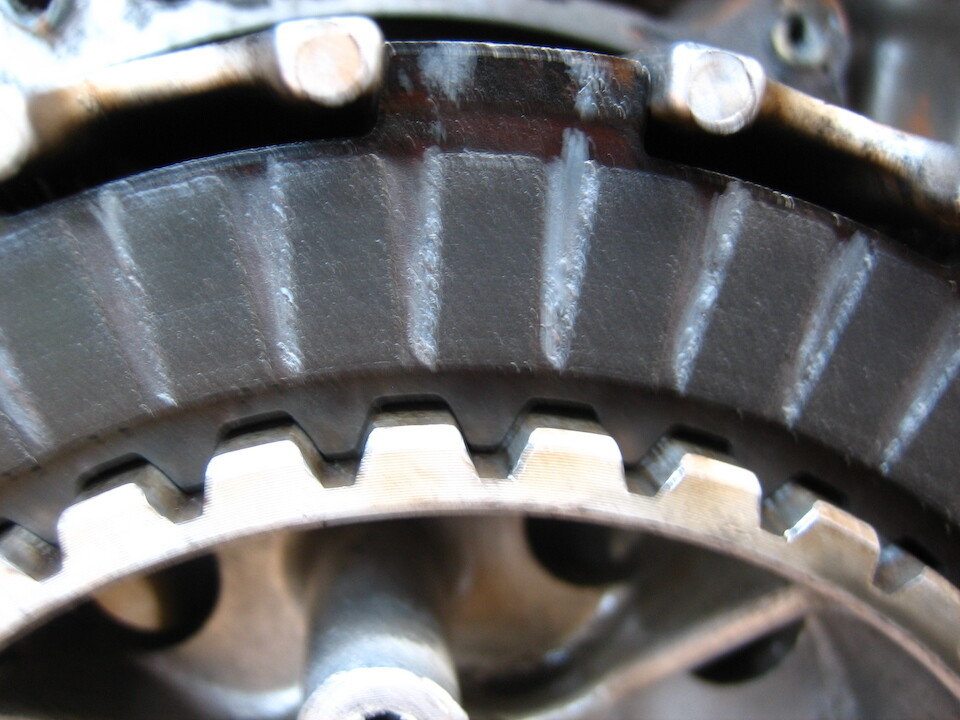
Excuse the blurry image, but you can see the edges of the fibre wearing, causing the clutch to slip. The fix got me to Sao Luis and then all the way down to Sao Paulo.
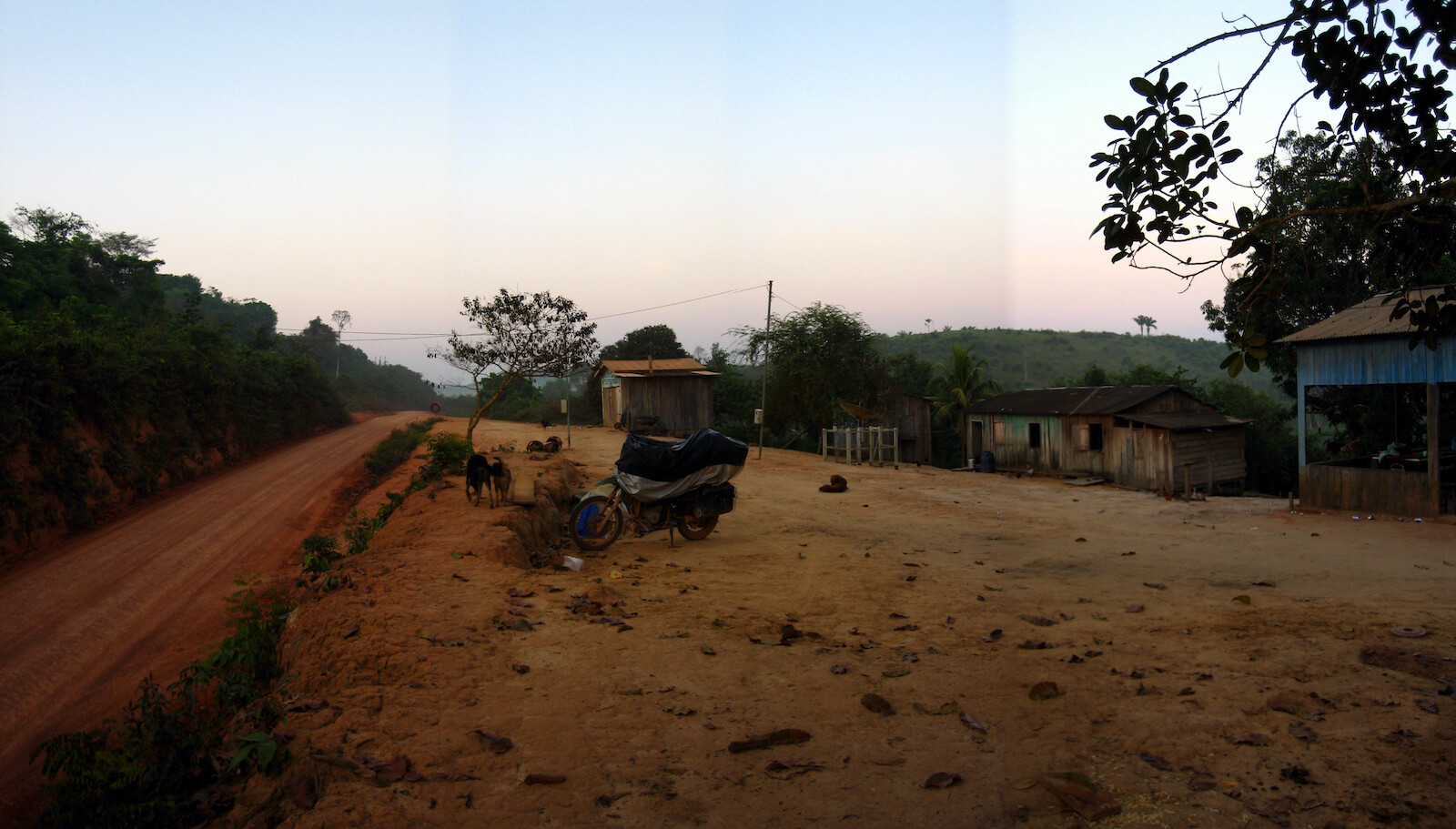
The mechanic said I could camp there for the night. His family were running a small rural bar and convenience store.
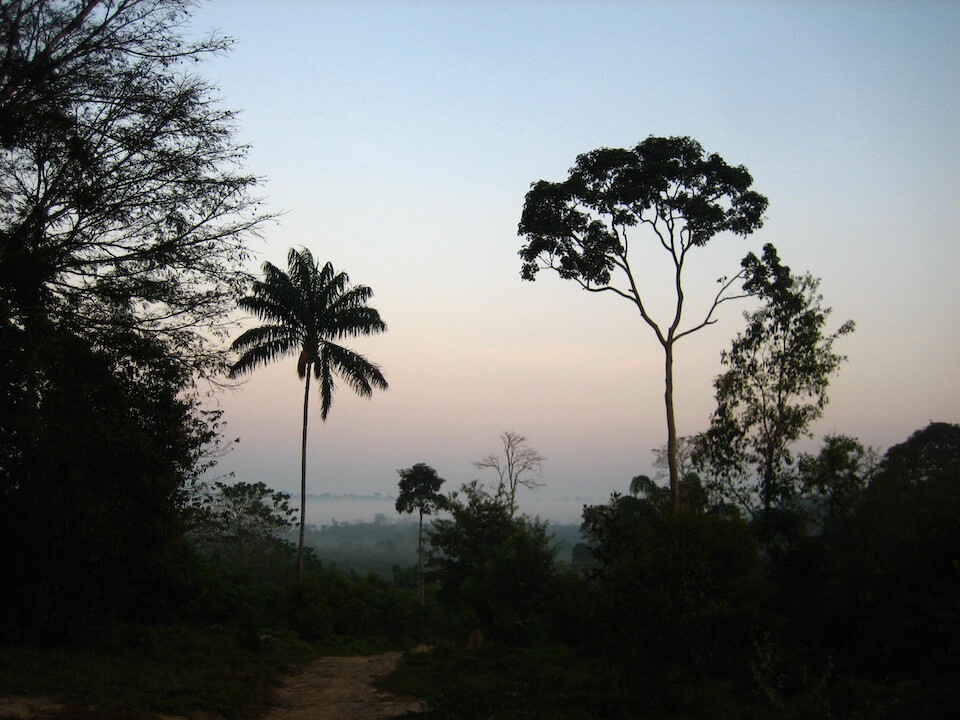
Sunrise the next morning.
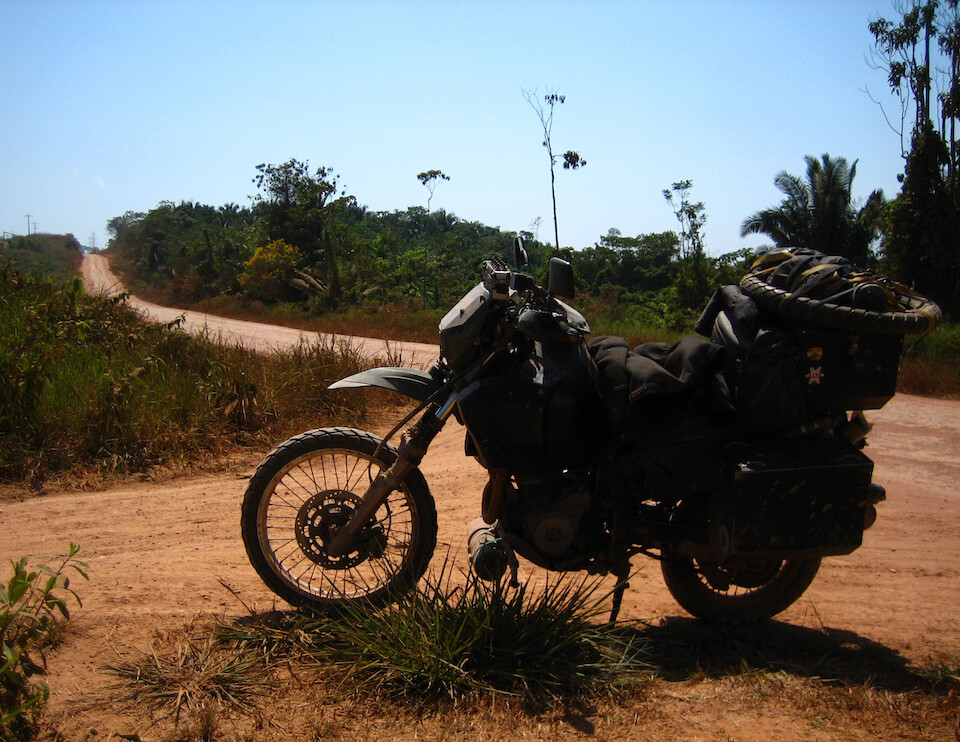
It soon became quite hot and I took a break under a bus stop stand.
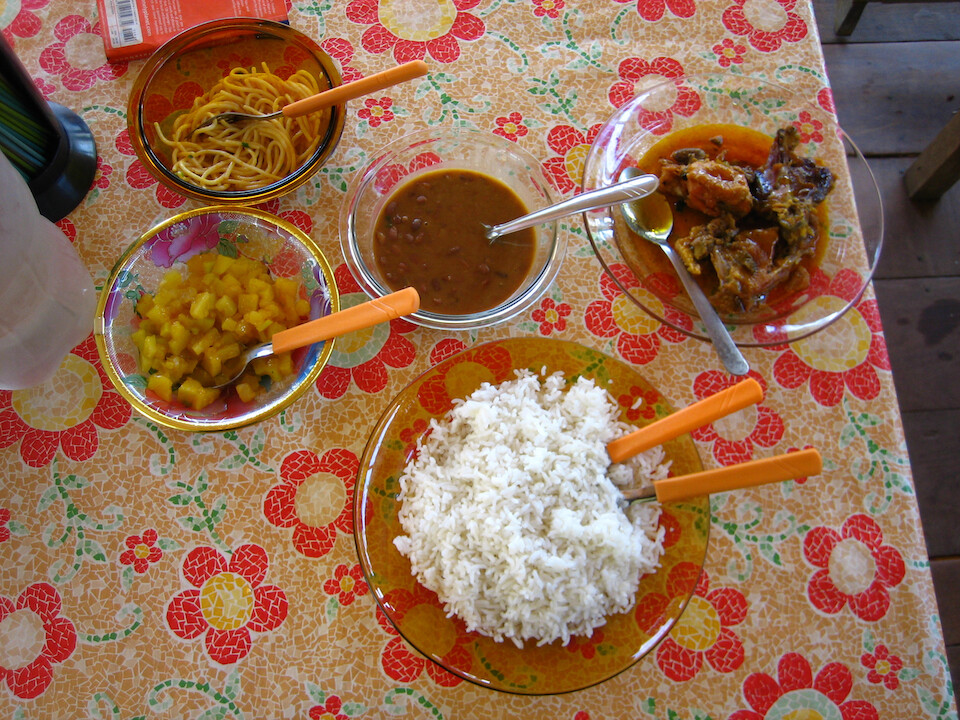
Similar lunch of rice, noodles, beans, meat and some veggies. I only found out later that if the food comes in separate dishes, it's R 8, but if it comes on one plate (like yesterday), then it's R 5. This is a lot more than I've been used to eating in the last few days.
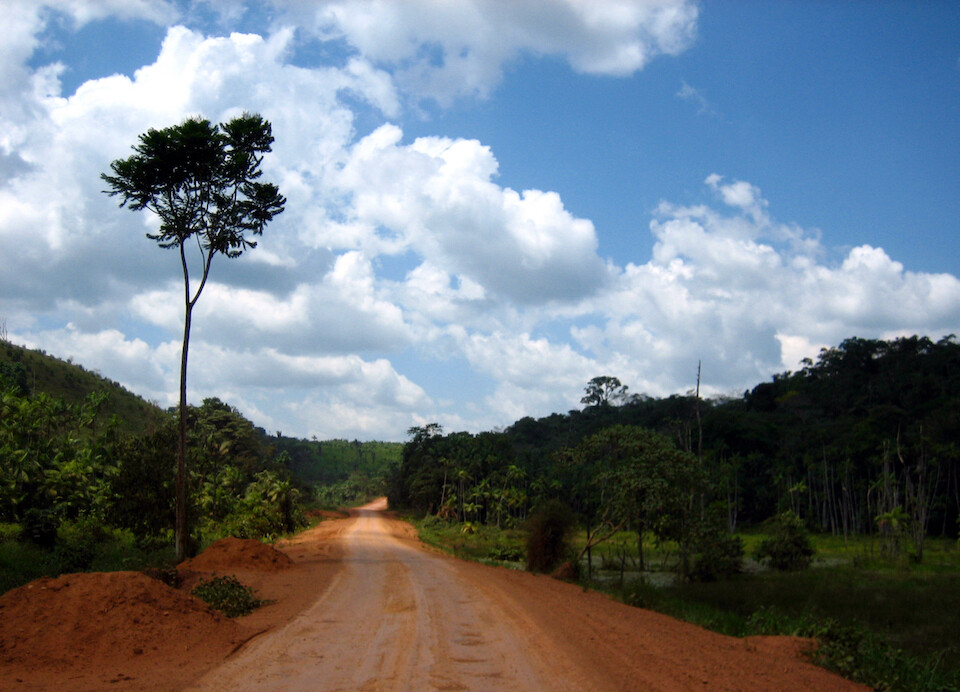
The scenery was pleasing as I got closer to Altamira.
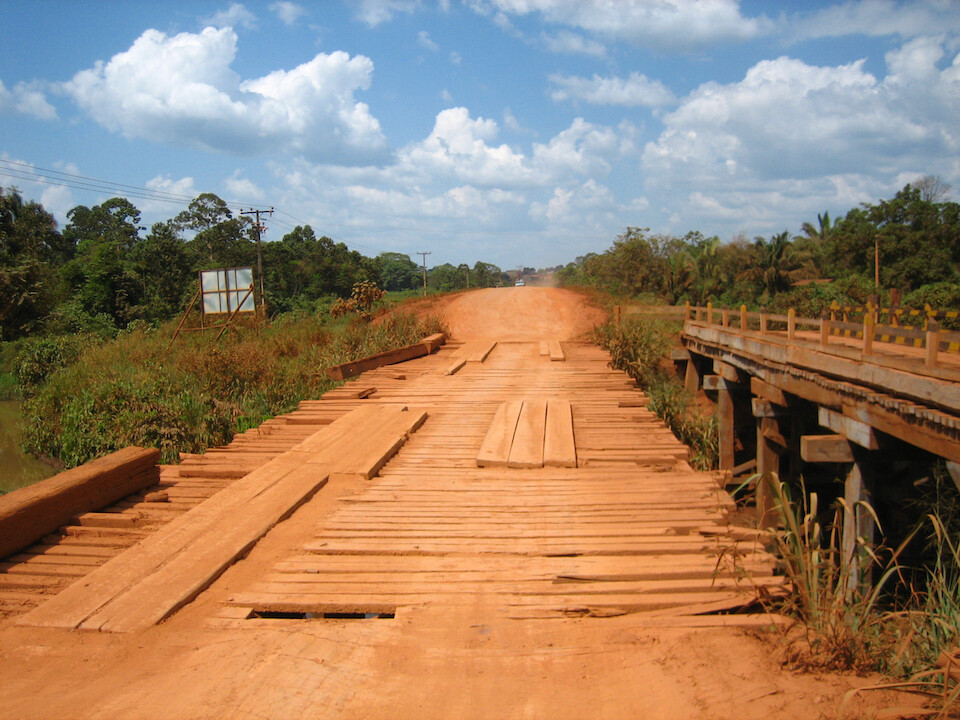
An old bridge deteriorating as the new bridge is being built.
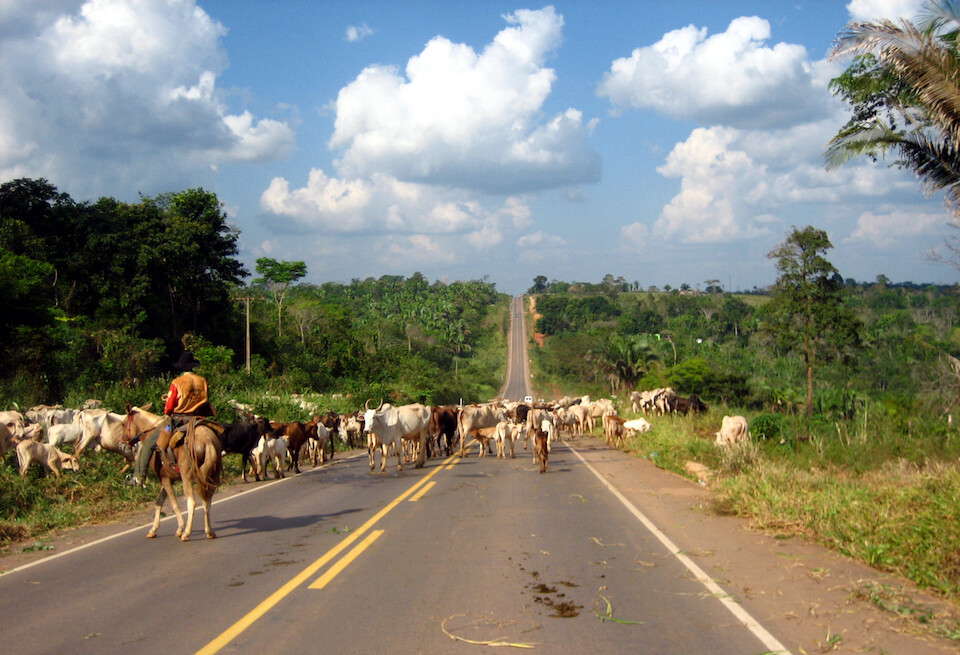
The pavement beginning outside Altamira with cattle being herded down it.
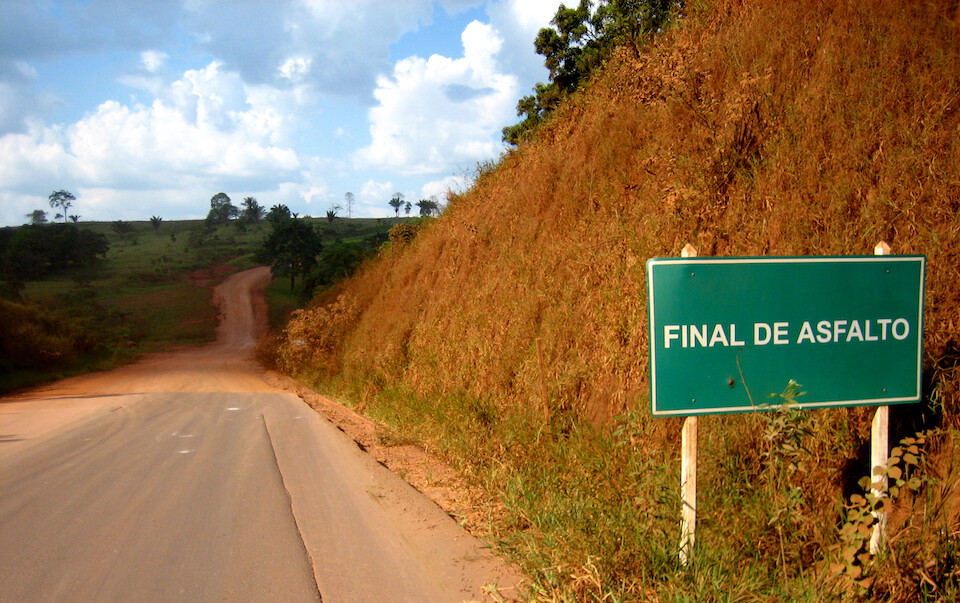
But it ended soon for construction.
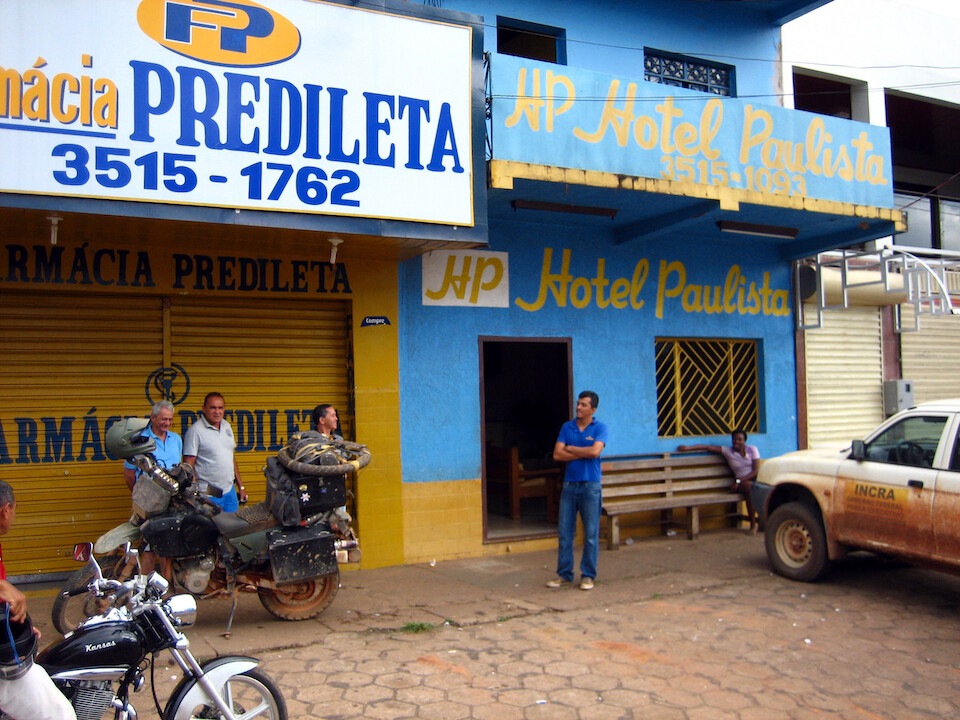
I decided on no more tenting it in cities, since it's too hot at night with no breeze blowing through. I got a R 25 room (negotiated down from R 35) at Hotel Paulista in Altamira and most hotels in Brazil come with breakfast included.
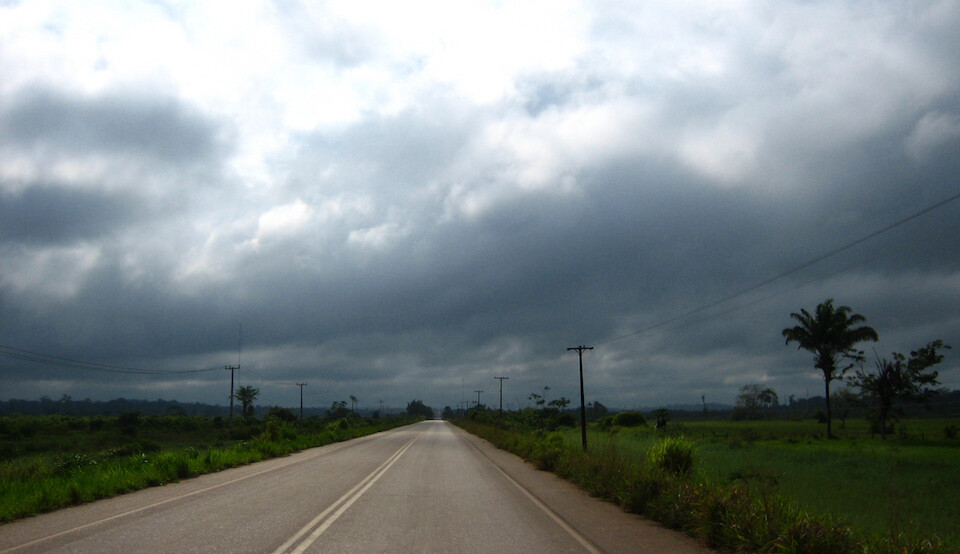
Setting out the next day for the last 500 kms (310 mi) to Maraba. The dark clouds only threatened a few times with drizzles, but I was glad to traverse the whole TransAmazonica without encountering any rain.
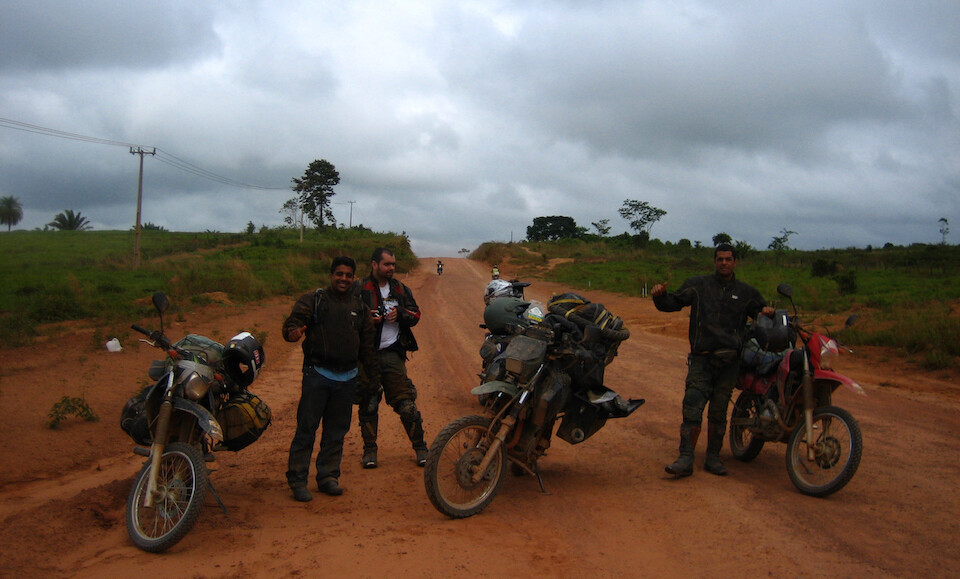
As I stopped to reduce the air pressure in the tires for the off-road, these three Brazilian bikers from Belo Horizonte showed up.
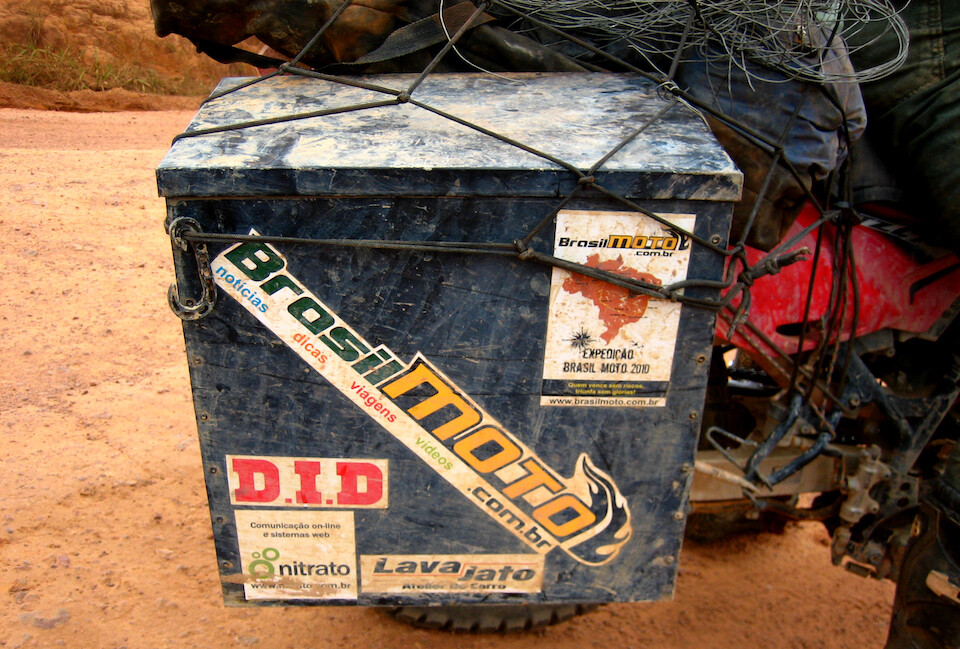
Homemade panniers. They were making a big loop around Brazil and did BR-319 up to Manaus and were coming from Santarem.
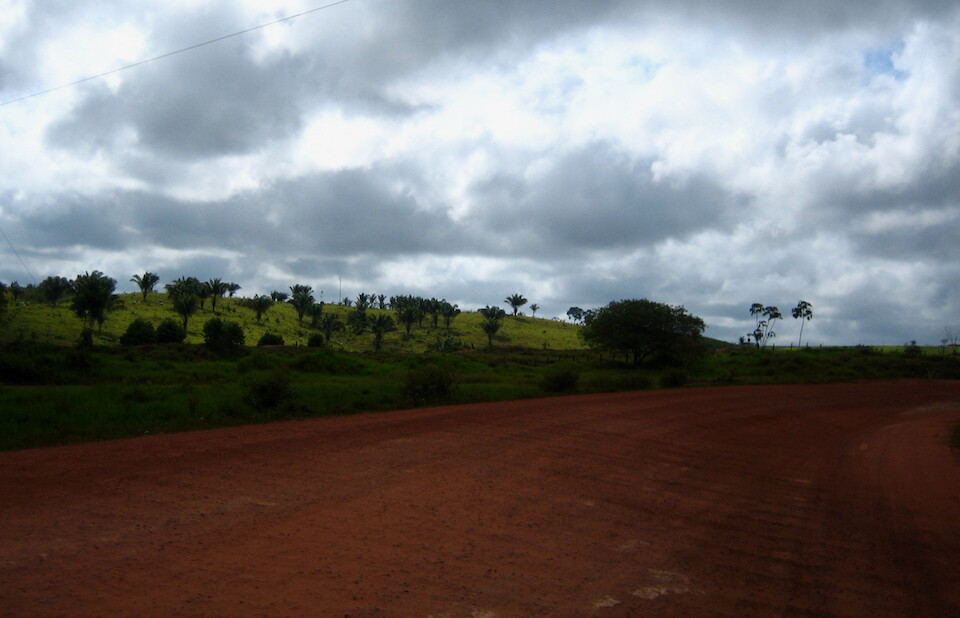
The first bit of washboard that I experienced on the TransAmazonica, giving an indication to the traffic and the speed they fly at in this more crowded section of the route.
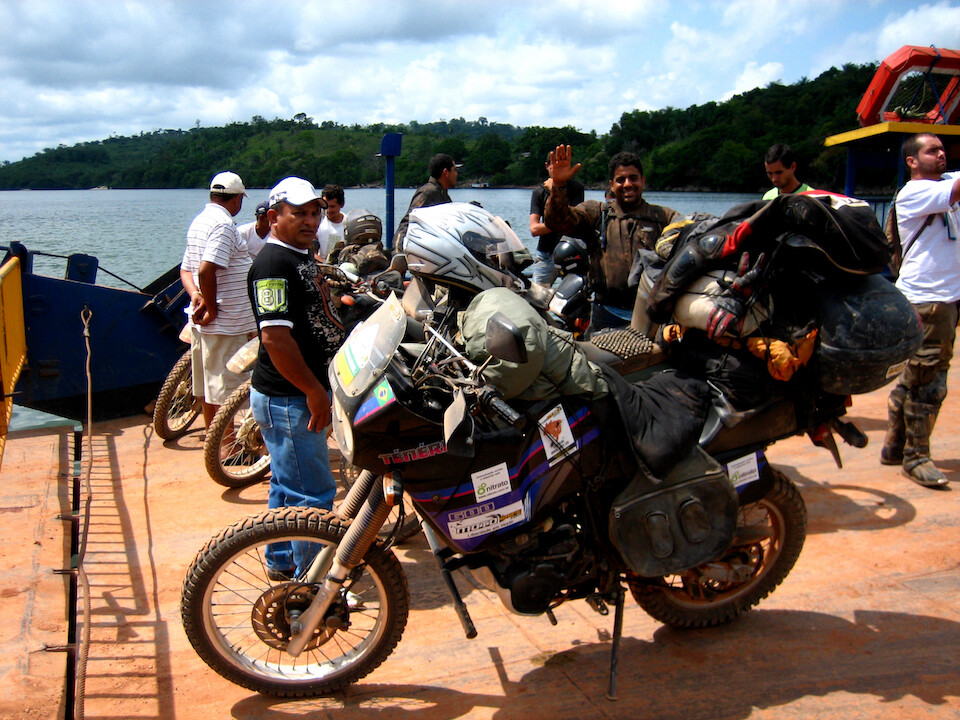
I met up with the guys again at the ferry across Rio Xingu. This river has made international news as the government wants to build the Belo Monte Dam on it to create the world's third largest hydroelectric power station. The proposal has so far been stalled since the 1990s due to strong opposition from numerous groups in Brazil and abroad. The main reason being that the social costs of the dam outweigh its benefits. The dam would flood 400 sq km (154 sq mi) of low-lying forest and this flooding will lead to an increase of methane emissions, which are far more deadly than CO2. Also, two huge canals, bigger than the Panama Canal would need to be carved up to divert water for the dam. With Brazil's new discoveries of massive offshore oil fields, it's been suggested that the environmental and social impact of producing electricity from burning oil would be less than that from this dam. Let's see the direction the new president takes this project.
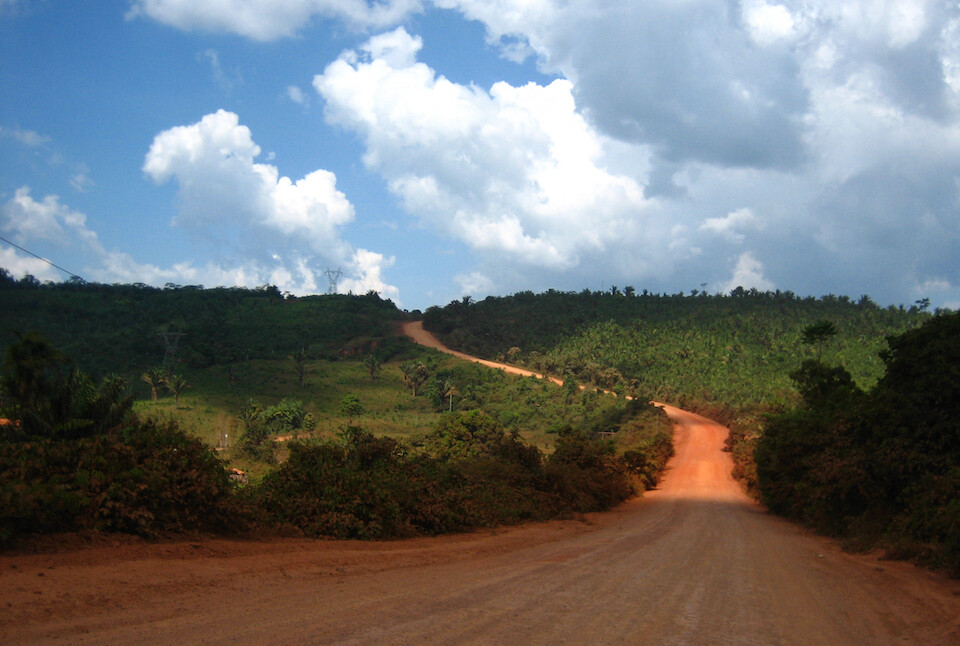
Enjoying the road again as it resembled areas west of Itaituba, winding up and over hills.
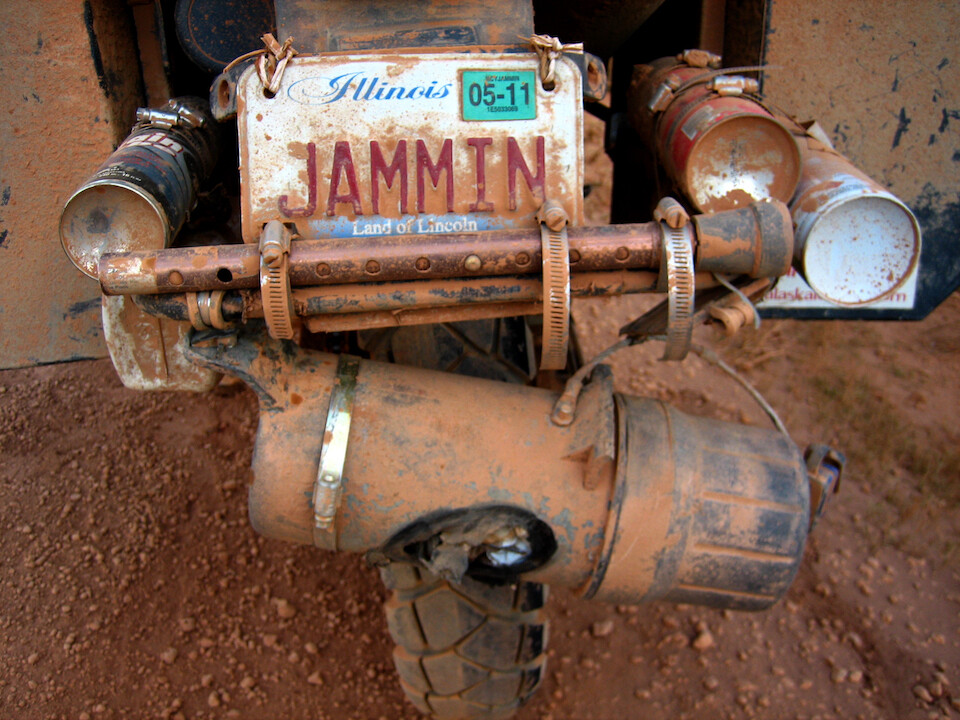
Riding too much washboard and this is what happens. The bracket holding this tool tube onto the pannier frame finally gave way and swung on to the tire, chewing a hole through it.
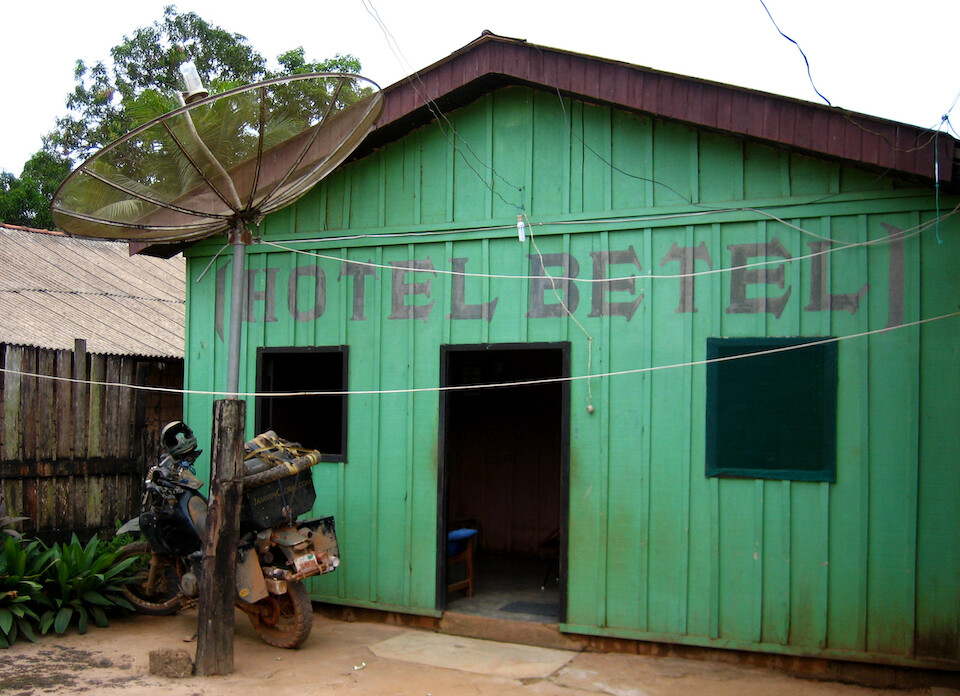
Getting a cheap bed at Hotel Betel for R 15. They had a newer section to the right with beds for R 40.
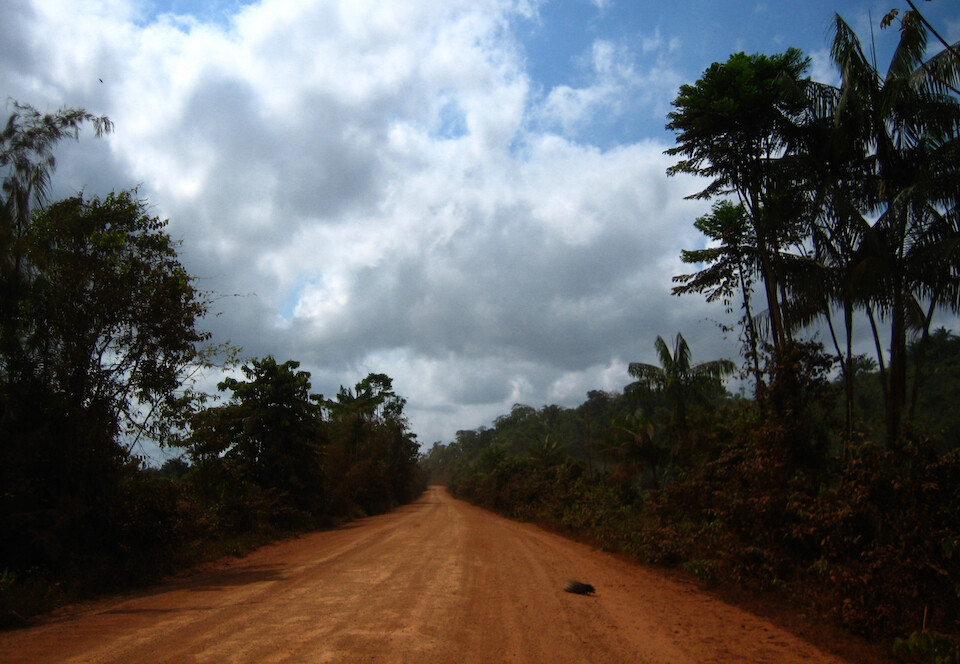
The last day on the TransAmazonica. While I was ready for the dust clouds to be done with, I sure did enjoy the remote riding.
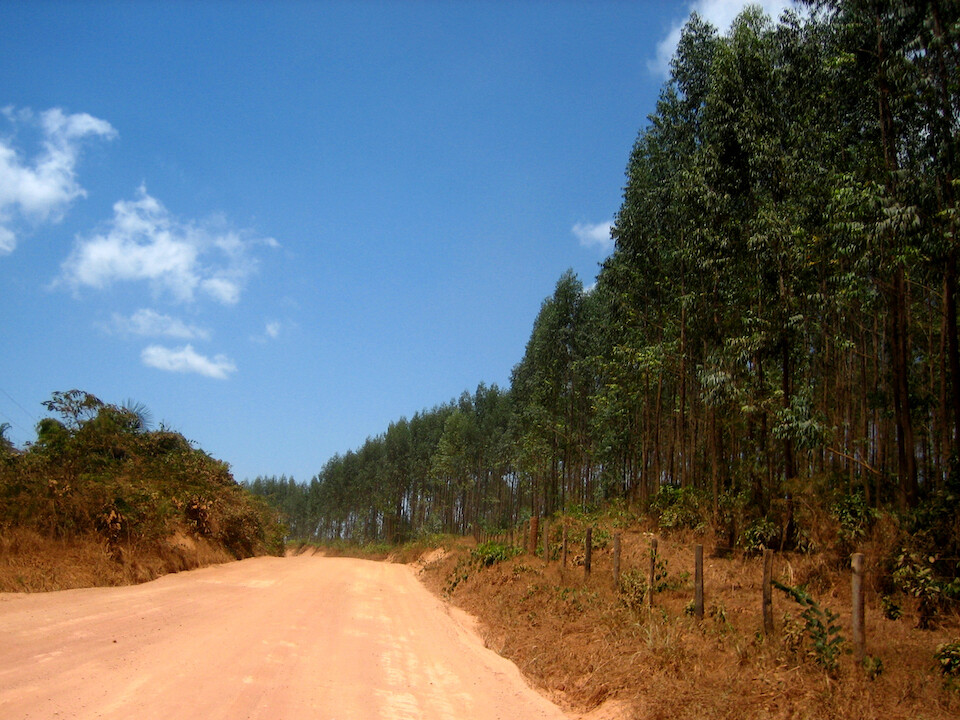
You can tell civilization is close when you see plantations of eucalyptus trees, instead of indigenous forests.
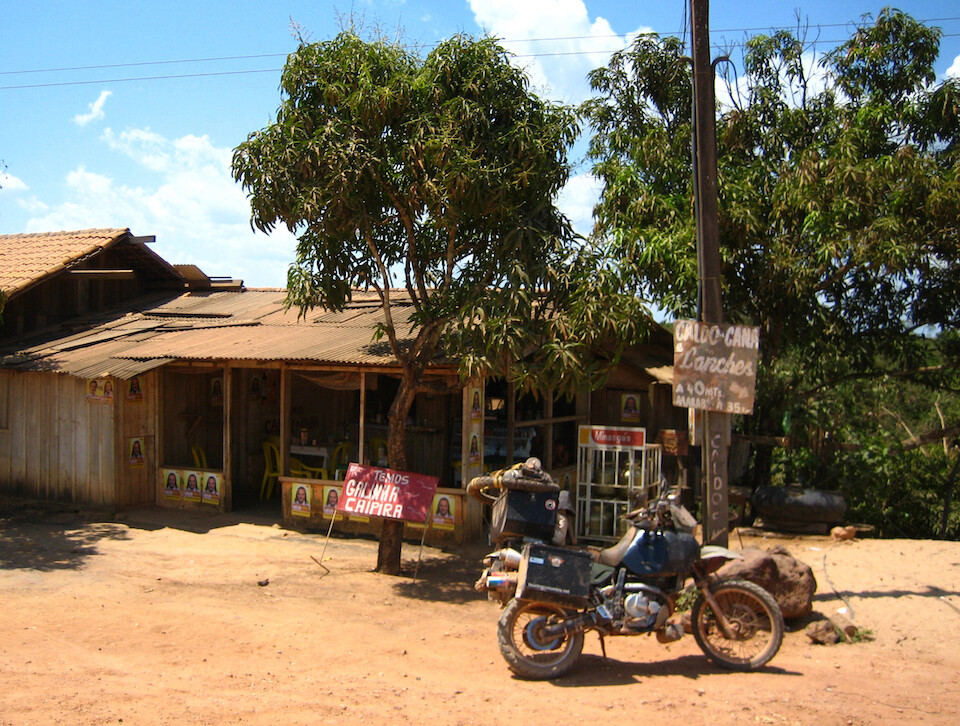
Getting some lunch close to the end of the TransAmazonica.
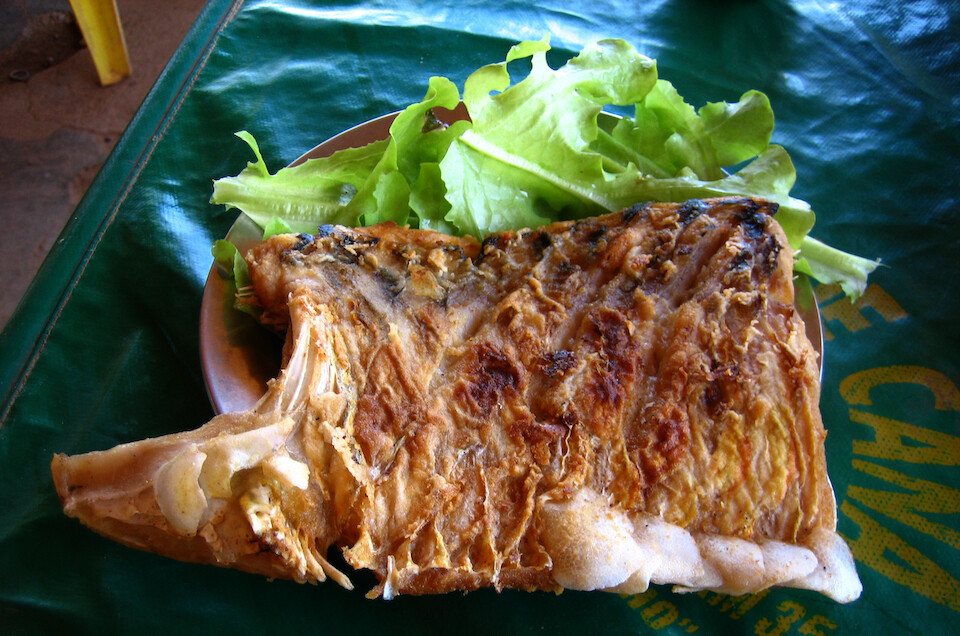
Having a huge piece of fried river fish that the lady said she caught that morning from the nearby river.
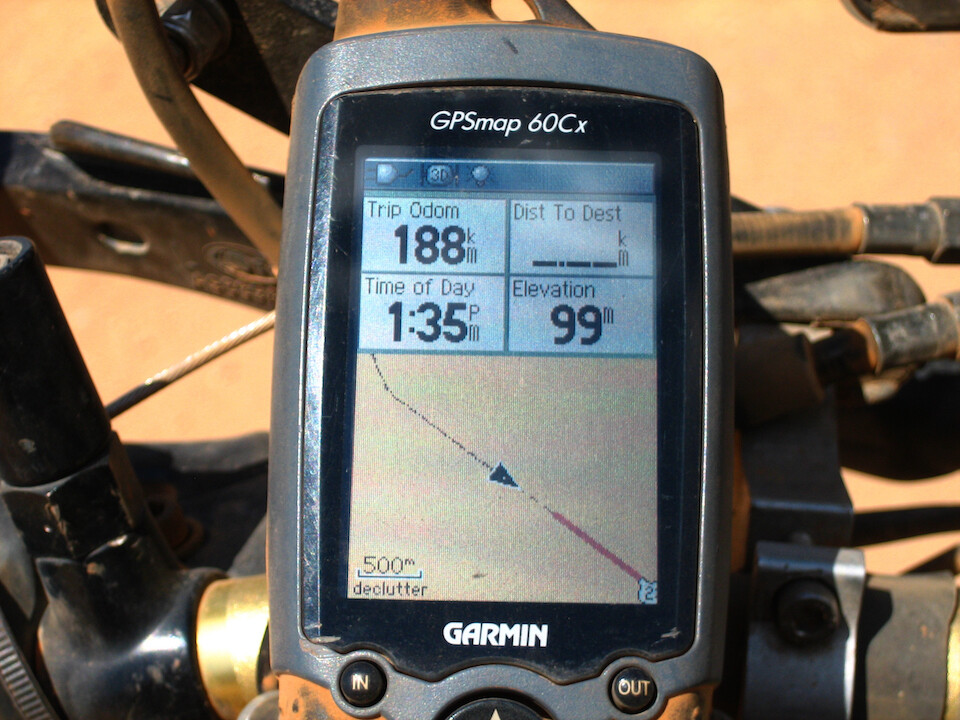
Coming to the end of the off-road section of the TransAmazonica. Wow, it was a long journey but totally worth it and glad to provide proof that this fabled road does exist indeed.
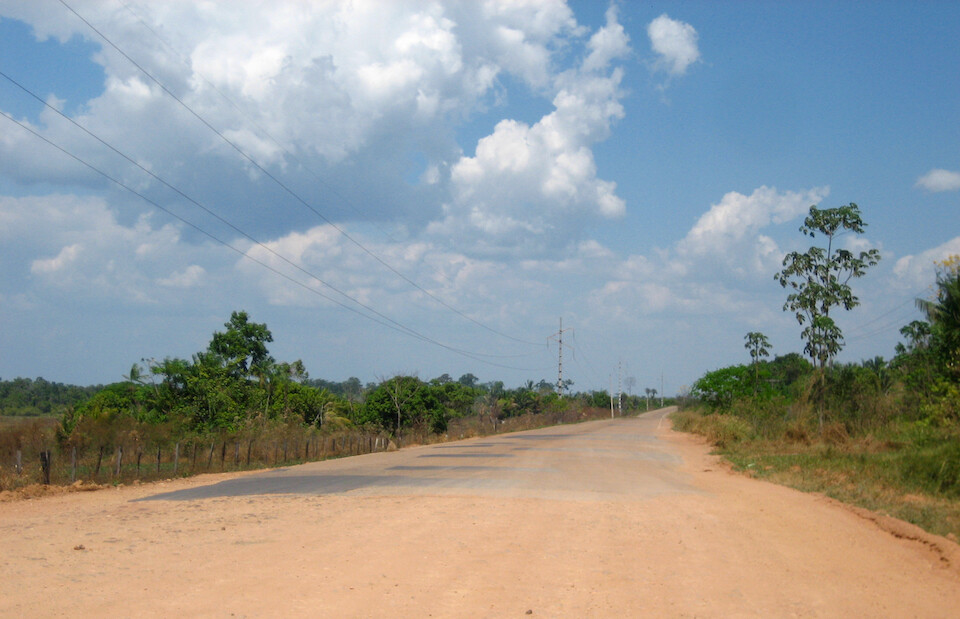
The pavement beginning outside Maraba. BR-230 carries on for another 1,880 kms (1,167 mi) to the coast, terminating at Joao Pessoa, but I was turning north for Sao Luis from here.
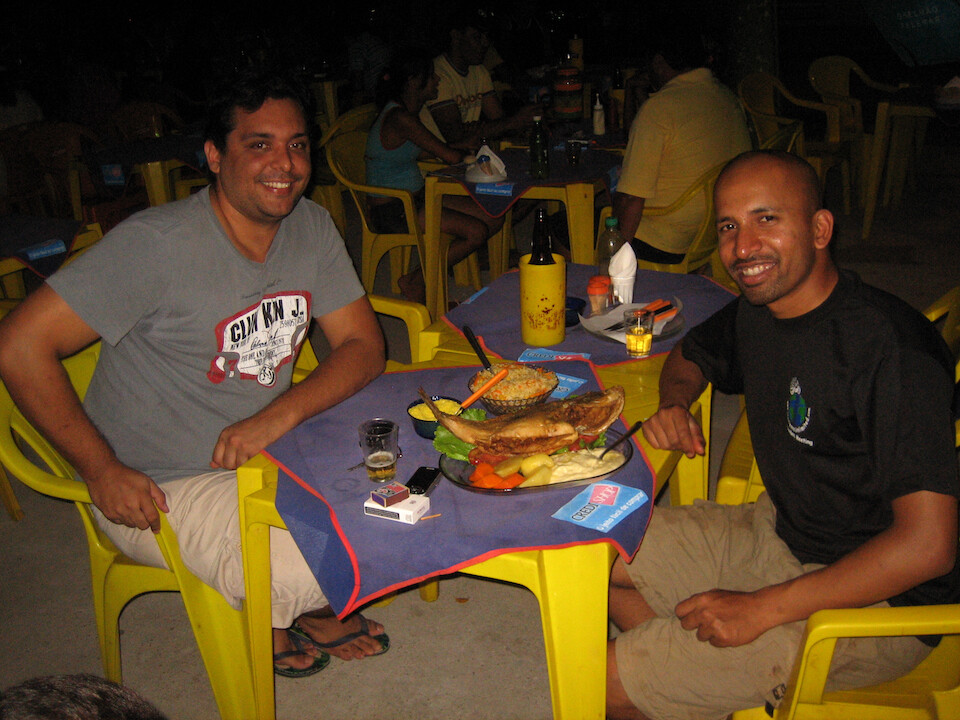
Meeting up with Guilherme, through CouchSurfing in Maraba. He's an architect from the state of Minas Gerais and moved out here to this 'frontier' town as business is booming. He wondered how I was actually going to ride from Porto Velho to Maraba and didn't believe the TransAmazonica actually existed, but I'm living proof. From Maraba, it's a different kind of Brazil, the more developed part.
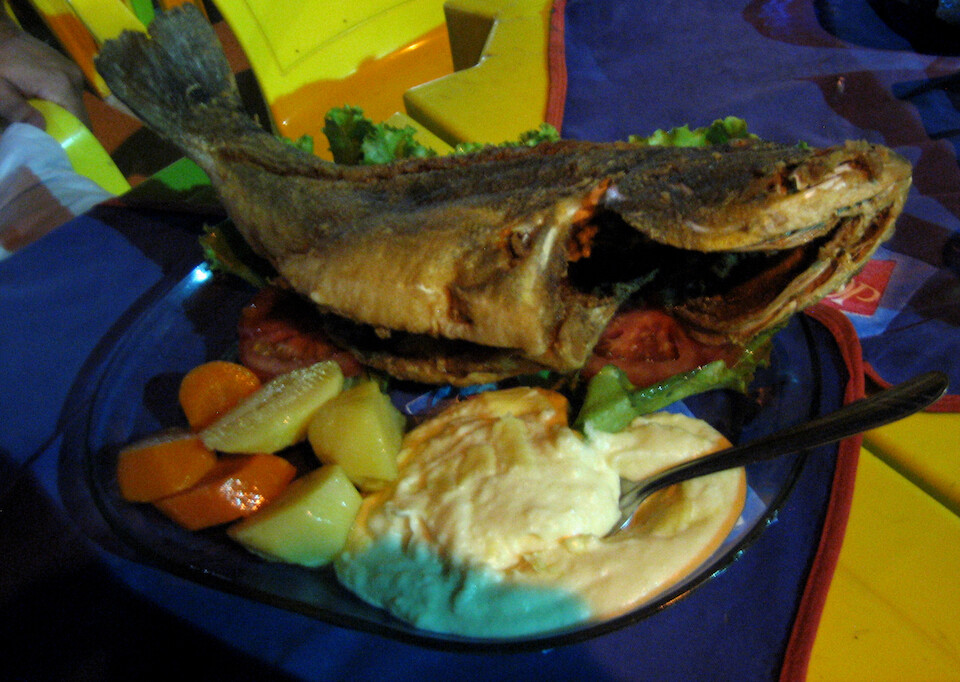
Having more tasty river fish with some veggies.
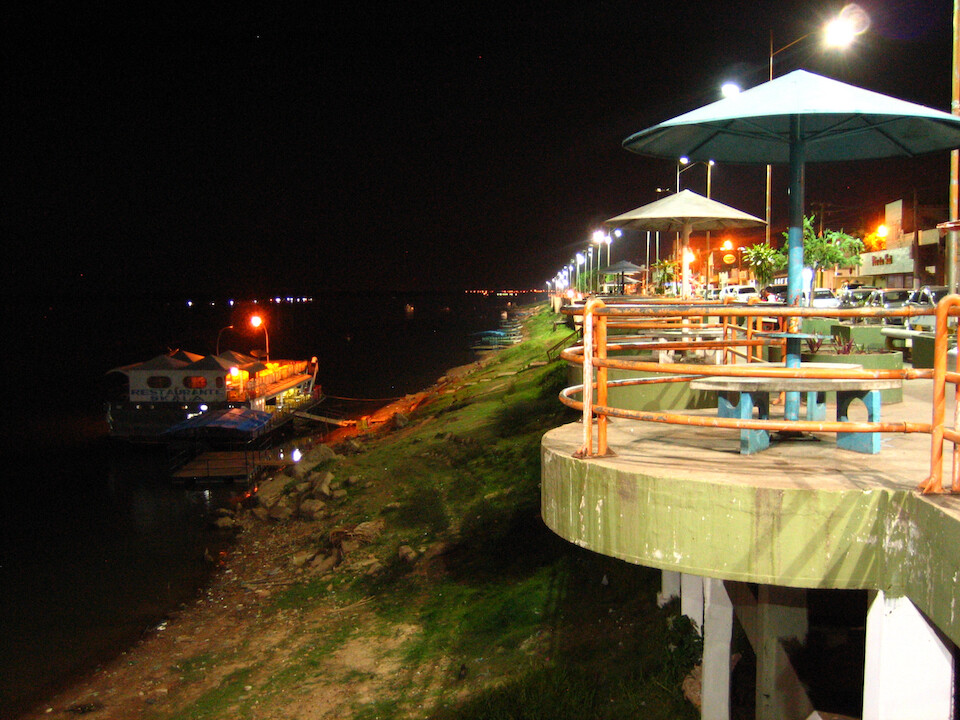
We had dinner by the riverside of Rio Tocantins, the central fluvial artery of the country. It flows directly into the Atlantic at Belem, not meeting the Amazon River. Guilherme said in the rainy season, the rising river level brings up that floating restaurant up to road level, even flooding some of the surrounding streets.
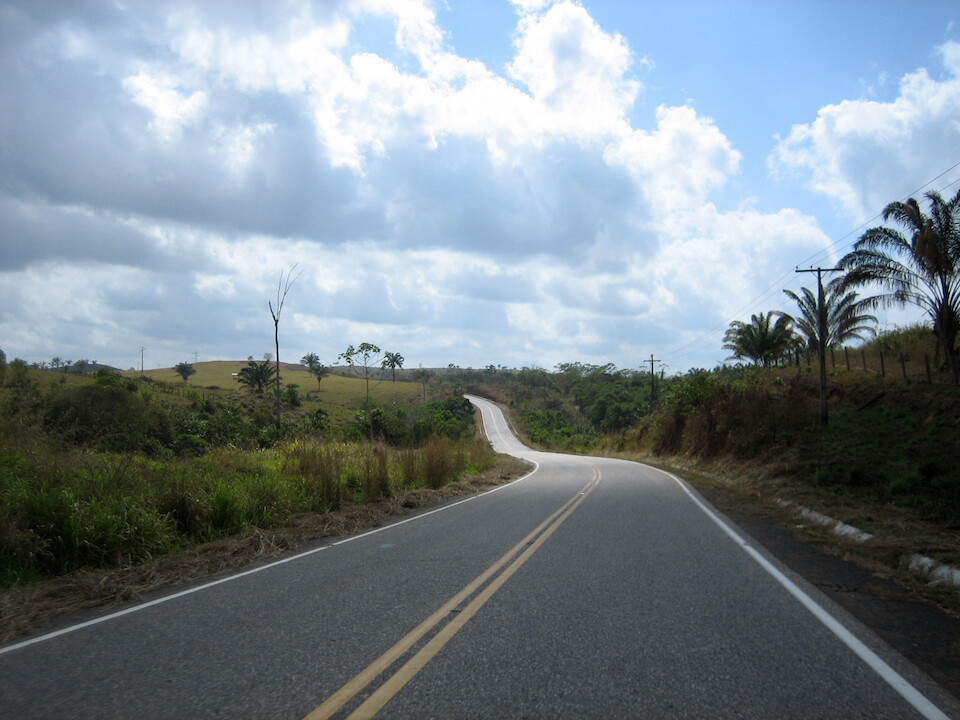
Riding the smooth highways up to Sao Luis, where I was looking forward to resting my sore body and giving sanDRina a break, as well. I also really wanted to wash everything. My helmet and gloves were feeling nasty to put on towards the end.
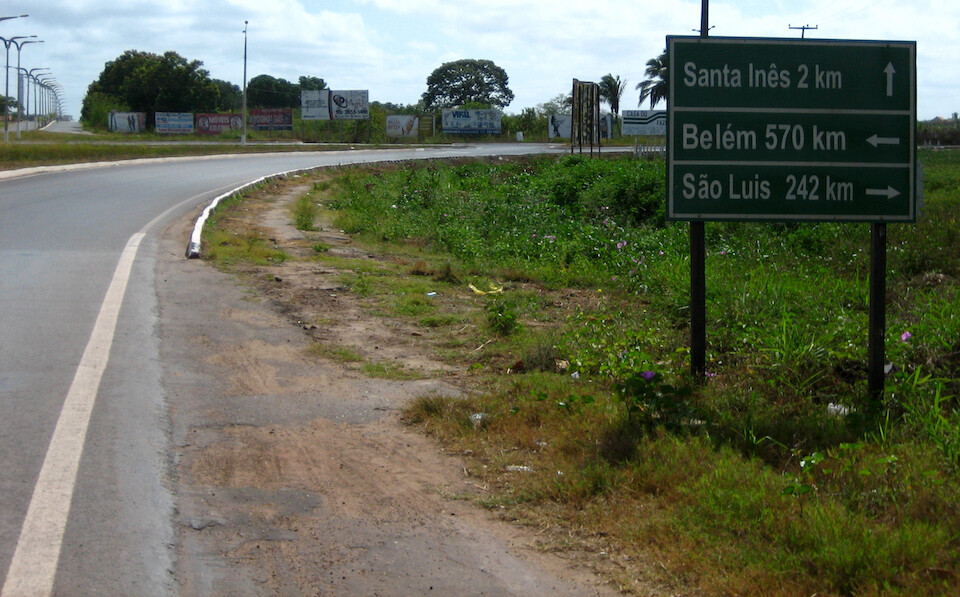
A distance board. Heading right. Almost there, but...
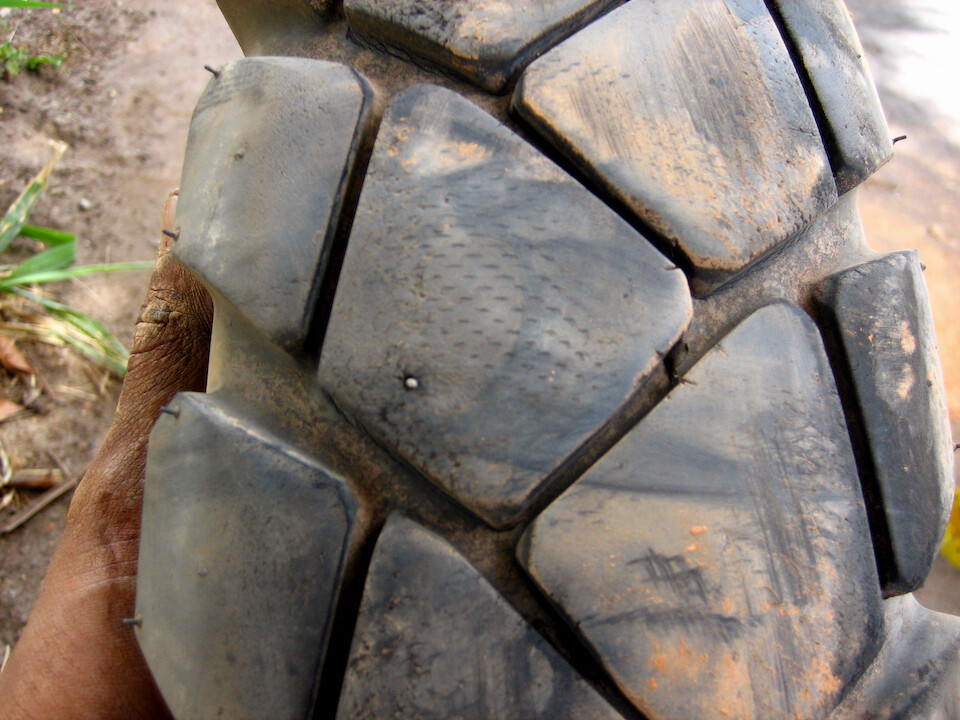
I picked up this nail just 135 kms (84 mi) from Sao Luis. I was so close.
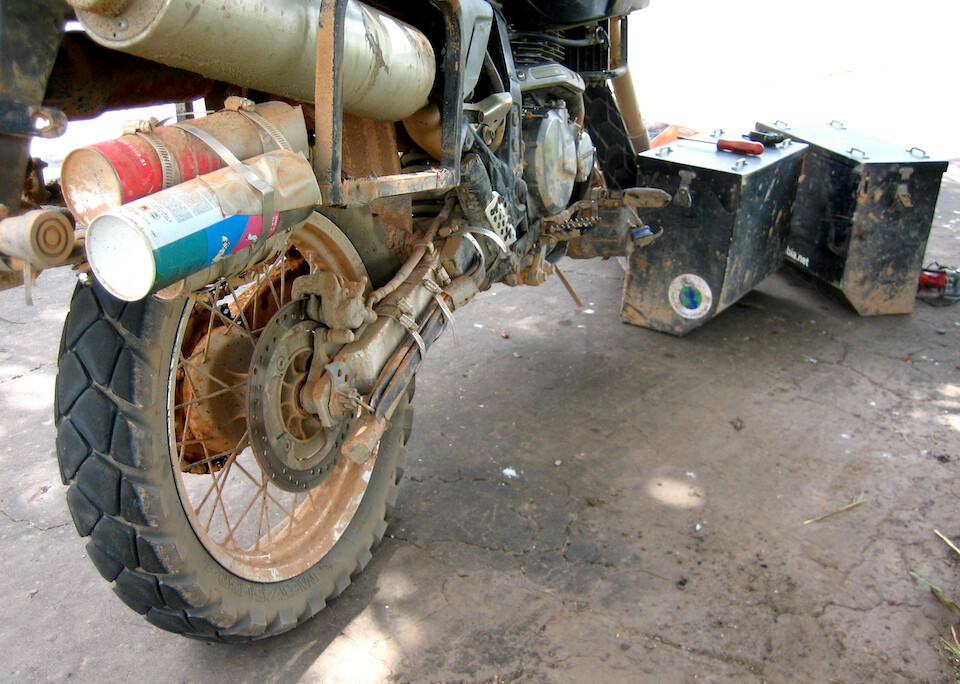
The reason I like using a heavy duty tube is that when it does goes flat, it doesn't deflate all the way and still has some structure to it, which helps in not ruining the tire. But I thought running a heavy duty tube would make punctures more rare. Who knows, maybe lots of punctures were averted by running this tube, but I'll never know, since I only pay attention when it does get a puncture.
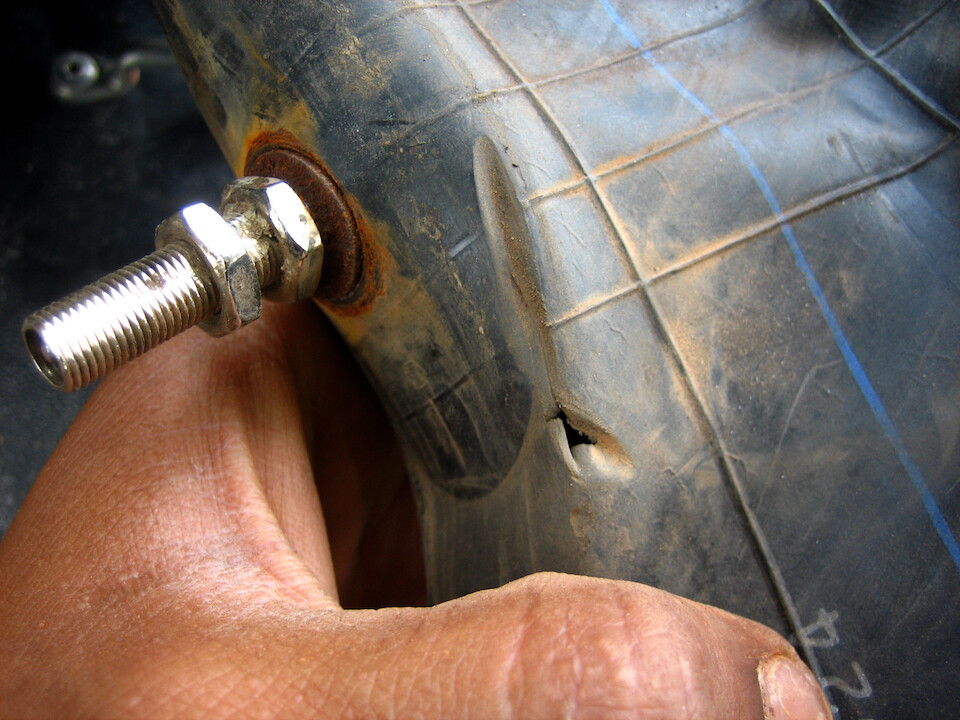
When the tool tube broke loose and rubbed against the tire, that friction wore a hole through my spare rear tube. My heavy duty tube is made from a different rubber compound and the patches I have don't stick to it.
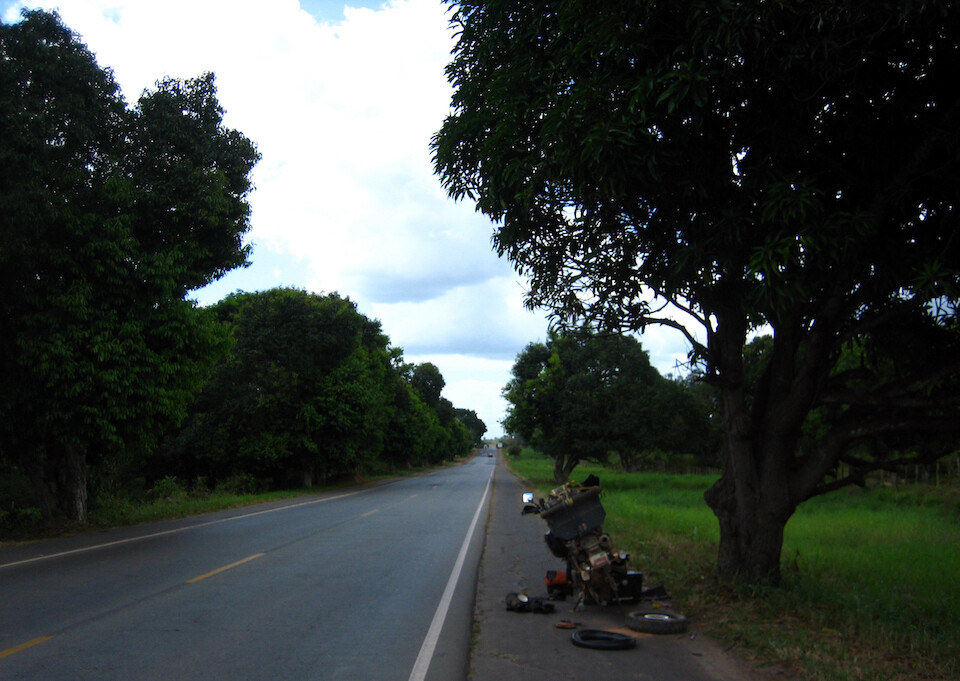
What to do? Try and fix either tube with lots of patches and hope it holds till Sao Luis?
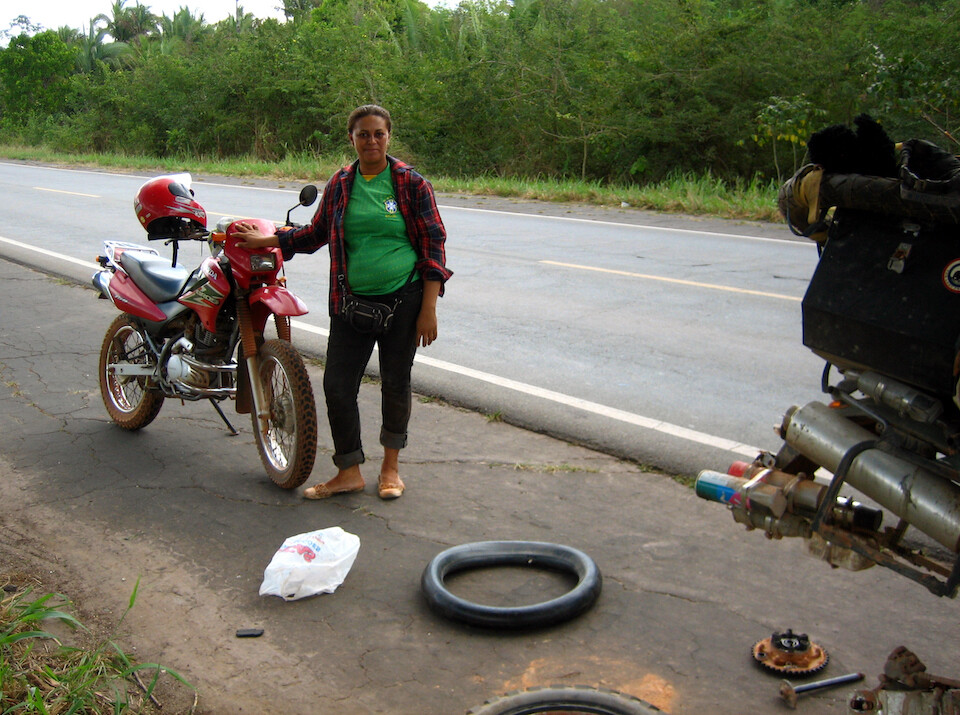
Like an angel appearing in a time of need, Bianca stopped by and after explaining my situation, she offered to take my tube to the nearest borracharia to get it hot vulcanized. After a few hours delay, I rolled into Sao Luis and rejoiced in the accomplishment of having crossed the great TransAmazonica Highway.
Next: Brazil, Part 4: Taking a break in Sao Luis
Previous: Brazil, Part 2: Riding the depths of the TransAmazonica